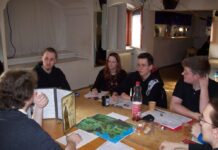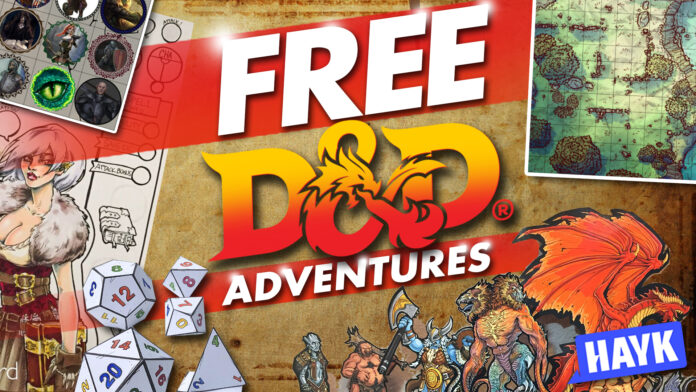
D&D content bundles can be downloaded anywhere. With these bundles, players can enjoy their games and DMs will always have new sources of inspiration. However, not all bundles are great. Some content bundles are incomplete, and others have lackluster quality. If you need a high-quality D&D bundle right away, look no further – we have an immense collection of D&D bundles categorized into popular themes.
We have included some interesting items in every bundle. These items reflect the overall value and usefulness of each bundle reviewed. In most cases, the items will help improve the quality of any D&D game.
Here are the item types that we’ve included in every bundle:
Pre-made Character Sheets
Instead of using regular character sheets, players can check out our compiled pre-made sheets. These sheets are patterned after specific themes, and they are printer-friendly. Most of the sheets that we’ve compiled are also form-fillable.
Check 5pancakesz‘s Tutorial about DnD 5E Character Sheet:
Free-to-use Tokens
It’s always nice to have tokens representing characters and monsters on the battlefield. The free tokens in our bundle can be used in all campaign settings, and they also have custom frames and unique art.
Or if you’re looking to be creative, you can check out Sly Flourish – The Lazy Dungeon Master‘s universal D&D monster token for 30¢:
Battlemaps
A D&D group can never have enough battlemaps! With our selection of high-quality free battlemaps, any DM can prepare exciting social encounters and combat scenes.
If you’re unsure what to do, here are essential Tips for running large dungeons with complex maps in D&D by the DM Lair:
DIY Dice Print-Outs
With hundreds of dice sets available online, there’s almost no need for dice print-outs. But for players interested in aesthetical vintage collecting, we have some dice print-outs ready to be assembled. These print-outs vary in quality, design, and complexity.
You can also check Michael Makes‘ guide in making D&D Dice:
If you have the right materials, you can instead make your DIY polyhedral dice without a pressure pot. Cyna of CountryHullCottage.com has a great tutorial for this kind of stuff. Check this link to see the detailed instructions.
Printable Mini Cutouts
Players who are looking for miniatures but don’t have the budget can check out the printable minis in our bundles. These minis can be printed, cut out, and set up for a casual D&D session. We have different minis representing heroes, NPCs, monsters, and even fantasy furniture pieces.
To learn more about how to make D&D paper minis, check out Matt Taylor Variety‘s tutorial video:
Free Audio Assets for Roll20
Within our themed-based bundles, DMs and players can find downloadable Roll20 audio assets. These audio files are free and can be uploaded anytime to your Roll20 campaign.
You can also use The Guild of Ambience’s 1 hour version of Ambient Fantasy Music to really feel of your campaign:
…or you can use Sword Coast Soundscapes’ audio as background if you’re running a generic dungeon campaign:
Bundle-related Books
And last but not the least, we have collected some of the best D&D third-party books that anyone can get for free. These books offer new character customization options, features, and homebrew ideas for any D&D game.
Refer to Mr. Tarrasque’s roundup of the best D&D books of 2021 that you should consider adding to your collection:
Contents of this Page
Free D&D Adventures (With Downloadable Bundles)
Holiday or Christmas-inspired Theme
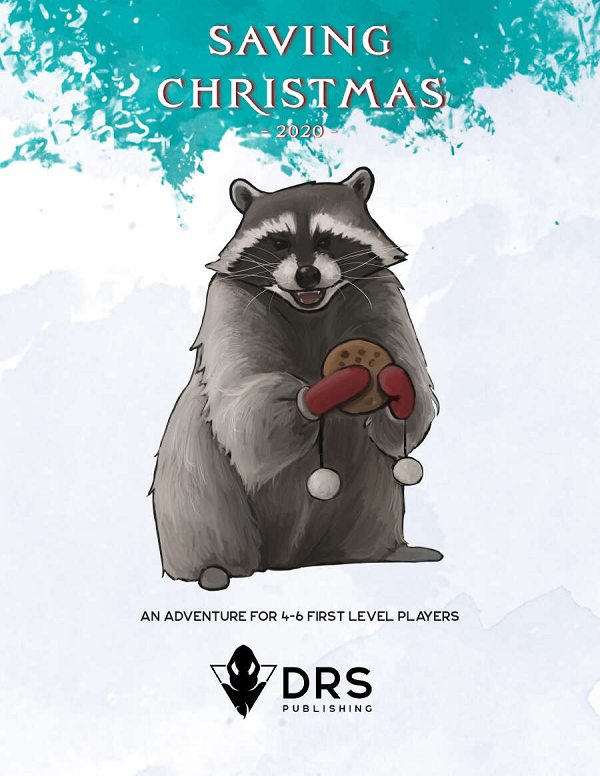
Number of players: 4-6
Length of the game: 4 hours
Difficulty: Normal
Enemy types: Gingerbread men, Reindeers, Crazy Santa
Related Book(s): How Orcus Stole Christmas – 5E
What You Will Like
- A festive and relaxing game
- Great for kids and the family
- Wacky enemies
- Funny encounters and situations
What You Might Not Like
- Non-challenging encounters
- The holiday theme is not for everyone
- Monster reflavoring required
A Christmas-themed D&D campaign is a necessary break from the average fantasy RPG trope. In a short holiday campaign, players might encounter less dangerous enemies such as gingerbread people, animated candy canes, reindeers, Christmas elves, and an evil version of Santa Claus. To an extent, Christmas-themed D&D games are best for kids and the family.
It’s easy to use the 5E system in a holiday D&D game. You don’t have to tweak the rules at all, but you may need to reflavor or retexture some of D&D’s monsters.
To make your Christmas D&D sessions more interesting, you can use popular holiday toys or figures. Think about the figures that you’d see in beautiful Christmas village models. Aside from figures, you can pass around holiday treats that every player would love!
Space Opera
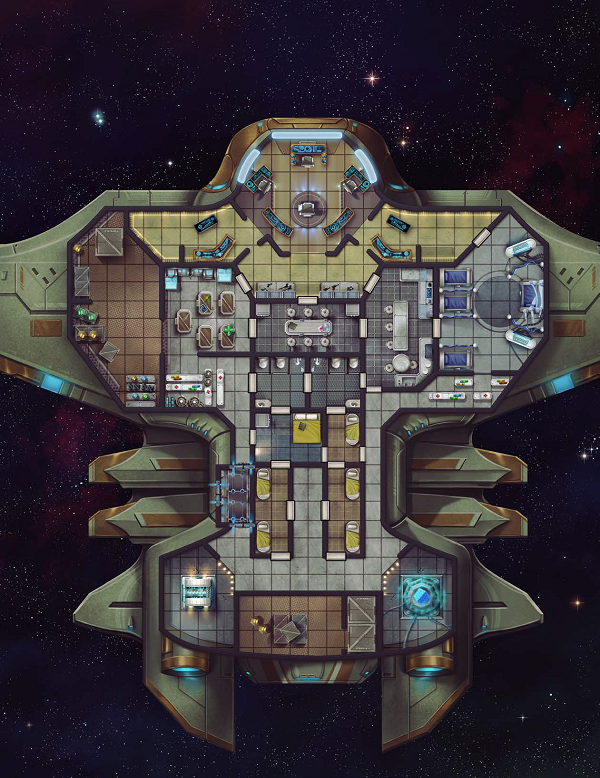
Number of players: 4-5
Length of the game: 6 hours
Difficulty: Medium
Enemy types: Space raiders, aliens, rogue AI
Related Book(s): Dune
What You Will Like
- Long-term sandbox gameplay in space
- Deep combat mechanics
- The chance to commandeer spaceships
- Space combat
- Planet colonization mechanics
What You Might Not Like
- Complicated space conditions
- Potentially deadly combat
- Spaceship anomalies
- Dragging campaigns and sessions
Space opera is one of the most common themes of D&D, yet it is constantly overshadowed by high fantasy settings. In a space opera campaign, you will encounter advanced technology, battle-ready spaceships, terrifying alien life forms, and deceitful factions with nefarious plans. You may think along the lines of Star Wars, Star Trek, and Battlestar Galactica.
If you’re a DM who wants to run a space opera game, you probably need to hack the D&D 5E system. D&D is built for high fantasy, and cosmic elements are mostly reserved for epic-tier sessions. Some D&D 5E aspects that you have to rework are combat, races, classes, equipment, magic items, and lore.
One easy solution is to use the Esper Genesis system. Esper Genesis is a 5E-compatible system for Sci-Fi and Science Fantasy campaigns. This system contains many detailed and reworked rules, as well as some free starter adventures.
The length of a space opera campaign can be an advantage or a disadvantage. Casual players might get deterred by the time investment required by a space opera campaign. On the other hand, RPG veterans will take all possible chances to rule the stars!
Anime
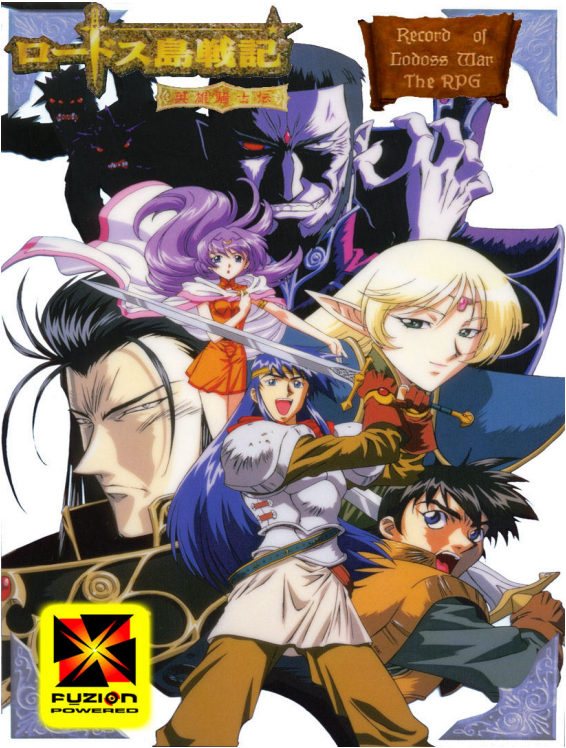
Number of players: 3-4
Length of the game: 4 hours
Difficulty: Normal
Enemy types: Crazy anime villains, overpowered monsters, edgy lords
Related Book(s): Big Eyes, Small Mouth: A Universal Japanese Anime Role-Playing Game
What You Will Like
- Captivating story and setting
- Distinct, powerful skills and techniques
- Wacky moments
- High-octane combat with monologues
- Exceptional BBEGs
What You Might Not Like
- Overly dramatic stories
- Game-breaking situations
- High chances of TPK
- Some minis and art pieces are needed
Engrossing emotional stories, cool hairdo, and larger-than-life characters – these are the best things about an Anime-themed D&D game. Through Anime D&D sessions, you will experience what it’s like to be Naruto or Luffy in a rapidly changing world.
Just like in many Anime shows, combat encounters in Anime D&D games are explosive. The traditional D&D 5E rules are not enough to demonstrate the abilities of characters and enemies. To make combat encounters fun, the DM should add extra ability bursts or effects. These effects can turn the tides of battle and put everyone on the cold edge. The limit break is another cool option for Anime D&D tables. A limit-breaking character can put his or her life on the line, gaining impressive abilities for a specific duration. The abilities are still governed by the dice, so the gamble might succeed or fail.
An Anime-themed campaign relies on theatrics and detailed imagery. To make your encounters more believable, you can use miniatures and printed Anime pictures. Miniatures are cheap nowadays, and you can just download Anime pictures online.
Also, Anime campaigns have the tendency to go beyond the capacities of an RPG system. A powerful artifact can foil the plot of a villain within one or two sessions. To prevent the game from falling apart, the DM must implement a series of checks and balances with every magic item. Combat scaling is also important to prevent unnecessary TPK (total party kill) and sudden deaths.
Mecha
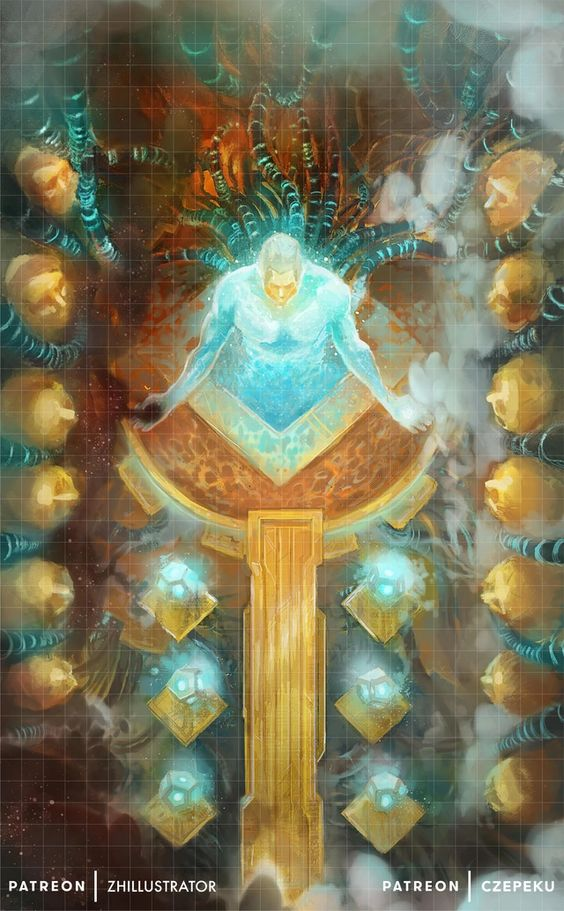
Number of players: 4-5
Length of the game: 4 hours
Difficulty: Medium
Enemy types: Giant mech suits, rogue pilots, super starships
Related Book (s): Cyberpunk
What You Will Like
- Epic robot battles
- Giant customizable robots
- Spaceship battles
- Flexible pilot personalities
- A dynamic mission system
What You Might Not Like
- Combat-saturated sessions
- Predictable plot
- Grinding required
- Challenging to run
A Mecha D&D campaign represents the culmination of adventure, big combats, and variable customization rules. The major selling point of a Mecha RPG is the opportunity to pilot heavy mechs or robots while delivering mayhem against scores of enemies. There’s even one mech-focused system that you can use: BATTLETECH.
If you want to run a Mecha session under D&D’s rules, you definitely need to hack the system. Thankfully, there are dozens of mech sources that you can use. These sources contain detailed robot stat blocks, customization options, and advanced mechanics. You might even get supplementary material for magic-powered mechs.
Mecha campaigns usually have basic plot elements, and most of them are predictable. The usual antagonists of Mecha campaigns are disgruntled leaders, vengeful commanders, powerful AI systems, crazed scientists, and demented tyrants. The simple plot might disappoint players who are always looking for big layers of deception and intrigue. It’s possible to extend the story and introduce multiple antagonists, but this might make the campaign too dragging.
Grinding is also a prominent aspect of Mecha D&D. To become competent enough, the party must have one or two giant mechs. Naturally, mechs and their parts are expensive. Players might feel compelled to finish multiple quests to get the money needed for mech units, weaponry, and parts. Some players love grinding, while others care about roleplay and story.
Despite the challenges related to a Mecha D&D campaign, it’s still a fun experience for any DM. At the same time, players will also enjoy the ground-breaking mech combat and the thrill of building new robots.
Steampunk
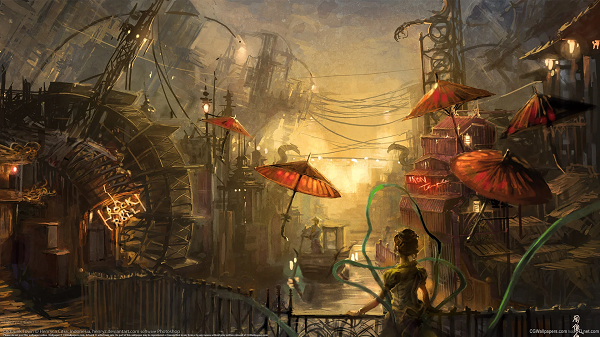
Number of players: 4-5
Length of the game: 6 hours
Difficulty: Normal
Enemy types: Steam engines, deranged inventors, junkyard warriors
Related Book(s): Steampunk Role-Playing Resources
What You Will Like
- Steam power supremacy
- Awesome steam machines and devices
- Stylish outfit designs
- Easy to adapt or convert
What You Might Not Like
- Easy combat encounters
- Limited magic usage
- Lore might get boring
Steampunk has always been an interesting theme filled with gears, steam, inventions, and pollution. In a Steampunk D&D game, players will get the chance to build or pilot massive steam engines. Gunpowder is also common, so there are lots of chances to shoot first and speak later.
Adapting D&D 5E to a steampunk theme is an easy thing to do. The general rules of D&D can fit steampunk elements with only minor tweaking. You can just download the rest of the flavor or descriptive options online.
Players who love in-depth magic systems might get disappointed with a steampunk campaign. Since steampunk is all about progress through invention, magic is often neglected. If you are the DM of a steampunk game, you can introduce low-magic spells meant to improve the players’ experience.
High Fantasy
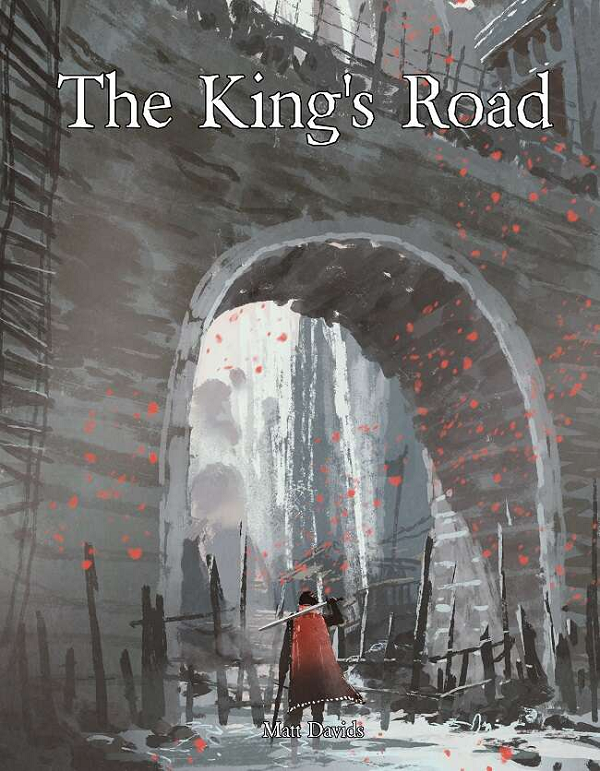
Number of players: 5-6
Length of the game: 10 hours
Difficulty: Challenging
Enemy types: Dark lords, dragons, celestial beasts, angry gods
Related Book(s): The Grieving Tree: The Dragon Below, Book 2
What You Will Like
- The classic D&D experience
- Lots of magic, mysticism, and adventures
- Deep, engrossing stories
- Intricate faction system
- Unique lands to explore or conquer
What You Might Not Like
- Can be overwhelming sometimes
- Some locations might feel dragging
- A high chance of character deaths
Dungeons and Dragons is a game meant for high fantasy. In the game, you’re destined to encounter orcs, dwarves, goblins, giants, elves, dragons, and tons of other fantastic creatures. High fantasy D&D games are very similar to Lord of the Rings or Narnia.
Unless you’re playing or running a one-shot, a D&D high fantasy game will take many hours to finish. You just can’t rush to the Dracolich’s lair without absolute preparation. The same logic applies to a powerful, mad king that must be dethroned. Typical high fantasy encounters are long because enemies can tap into various sources of magic. If you’re fighting an adult chromatic dragon, the encounter can also be long and deadly.
Exploration is a big part of a high fantasy D&D. Aside from the fabled lands of a realm, other dimensions can also be explored by players. This type of journey can be risky or costly, depending on the DM’s discretion. Still, the risk-reward ratio of an exploration is enough to keep players interested for a long time.
Creative flexibility is another strong factor of a D&D high fantasy campaign. You can go all-out on writing the story of your campaign’s villain. However, you need to make sure that the story is unveiled in a careful manner. You shouldn’t just dump huge chunks of lore in the campaign. Otherwise, the players might get bored or overwhelmed.
A classic D&D high fantasy game will make anyone feel like a real hero. At the end of the day, D&D is all about epic stories shared with friends and loved ones.
Modern or Contemporary
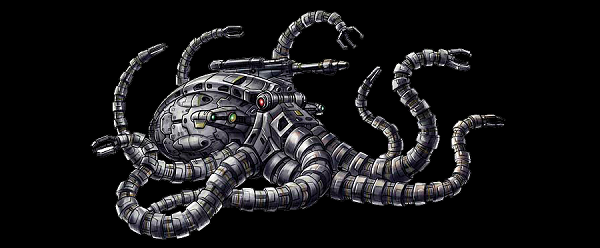
Number of players: 3-5
Length of the game: 5 hours
Difficulty: Normal
Enemy types: Government agents, politicians, mercenaries, AI drones
Related Book(s): d20 Modern Roleplaying Game: Core Rulebook
What You Will Like
- D&D with a modern touch
- Real-life conflicts requiring unique solutions
- In-depth politics system
- Cinematic combat
- Huge potential for roleplay
What You Might Not Like
- Limited power levels
- Simple encounters
- The campaign might cover sensitive topics
A D&D game set in the modern period is unique and challenging to run. If you’re a DM for a modern D&D game, you need to create a fine balance between maintaining player interest and attaining realism. There are almost no sources of magic in a modern D&D game, and the basic weapons are limited to firearms, clubs, and knives. Despite these limitations, a modern D&D game shines greatly in the roleplay department.
The common conflicts in modern D&D campaigns are usually related to politics, crime, and environmental problems. These conflicts require discreet solutions that might involve espionage, data gathering, long negotiations, deep research, and clean kills. Combat encounters are few and far between, and they can be resolved in less than six or seven rounds. After all, explosives make a short work of everything.
One barrier of modern RPG campaigns is their tendency to get too close to real-life topics. Some players might feel offended with sensitive topics like racism, genocide, and mass slavery. Before running a modern D&D campaign, make sure that you’ve clarified the presence of these topics during Session Zero.
Horror or Psychological Horror
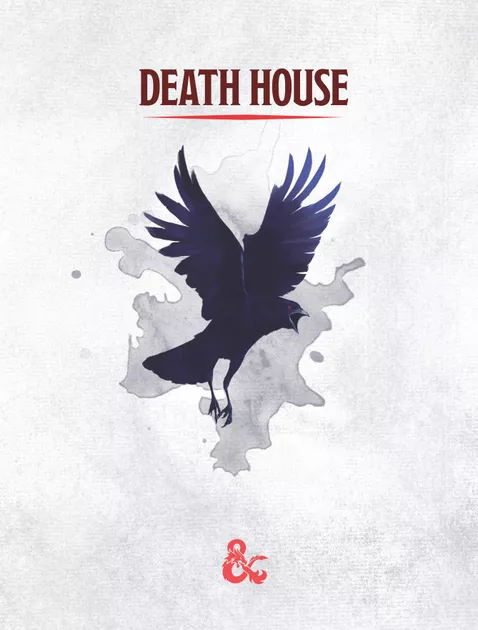
Number of players: 4-6
Length of the game: 6 hours
Difficulty: Challenging
Enemy types: Overpowered dark lord, dark creatures, ghosts, deadly environment
Related Book(s): 5E: Tome of Horrors
What You Will Like
- Fun and terrifying
- Interesting combat mechanics
- Difficult environment
- Lots of puzzles
What You Might Not Like
- Deadly combat encounters
- Combat balance can be tricky
- Some scenes might turn violent
Classic horror permeates all aspects of culture, especially D&D or tabletop gaming. In a horror D&D game, you’d find tons of dark creatures like zombies, vampires, werewolves, wraiths, and twisted aberrations. If you can weave a story while incorporating these dark creatures, you’ll have a potentially terrifying campaign that players will remember for years.
But what makes a horror campaign tick? In D&D, jump-scares have lesser impact because of every character’s Passive Perception (attribute for detecting danger). Additionally, players expect danger at every turn. The fighter and the barbarian are always eager to swing their weapons, while the wizard is ready to cast Fireball. To scare players, you need to use the full capabilities of the environment.
Animate a dungeon’s furniture without hesitation. Let the chairs and tables attack, and make your players feel that the BBEG is always watching them. The official D&D adventure, Curse of Strahd, utilizes this mechanic from beginning to end. Count Strahd Von Zarovich is not a beefy enemy, but his near-omniscience is staggering. He commands nearly everything – from the lowly bats to the chilling wraiths. On top of that, Strahd can appear almost everywhere on the campaign map.
Horror D&D campaigns are challenging in terms of balance. A combat encounter can go off the rails if enemies are always bolstered by the environment. This is the reason why most horror campaigns end up with early TPKs. To attain a balance between your horror combat encounters, neglect D&D’s official CR (challenge rate) metric. The CR is a faulty guide due to the randomness of dice and the early bonuses of monsters. As a horror D&D game DM, you must rely on your feelings. If you feel that an encounter is impossible to conquer, try to adjust it. You’re not running a horror game to kill players!
Violence is also common in horror D&D games. Tell your players about the possibly violent encounters that might appear in-game. This way, the players will know what to expect and they can also prepare ahead of time.
Magical School
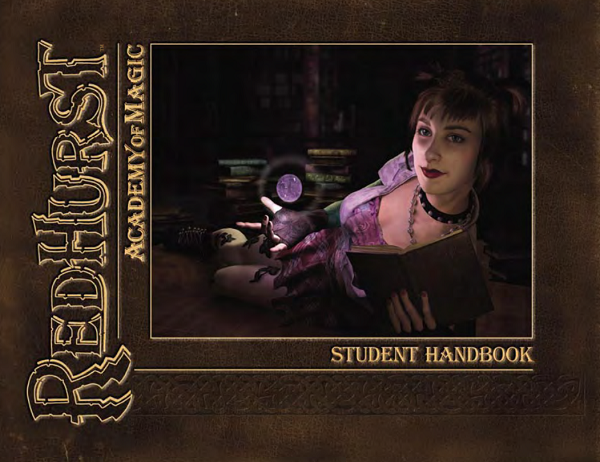
Number of players: 4-6
Length of the game: 8 hours
Difficulty: Normal
Enemy types: School plotters, magical creatures, spirits
Related Book(s): Dungeons & Dragons: Dungeon Academy: No Humans Allowed!
What You Will Like
- Academia vibes
- Interesting lore
- Great for building mysterious encounters
- Lots of room for character development
What You Might Not Like
- Slow start
- Minimal combat encounters
- Notable character limitations
If you ever want to run a campaign similar to the Harry Potter franchise, then you should focus on building a game based on a magic school theme. Magic school D&D games are captivating because of the way the stories are organized or plotted. Under most circumstances, a magic school holds deep secrets that can be discovered by students (or players). The secrets can serve as focal points of the campaign, introducing powerful plot elements and deceitful enemies.
Don’t expect lots of combat encounters in a magic school campaign. Players who start out as students must spend a lot of time studying and doing their homework. Occasionally, you – as the imaginative DM – can sprinkle plot hooks that students can follow during their free time.
Strixhaven is a useful supplement that will make your magic school campaign more robust. You can even mix Strixhaven’s college options with your homebrew creations or ideas.
Pirates and Piracy
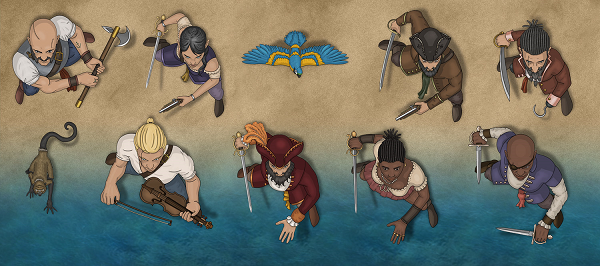
Number of players: 4-5
Length of the game: 5 hours
Difficulty: Medium
Enemy types: Enemy ships, giant sea creatures, enemy pirates, government officials
Related Book(s): Pirate Campaign Compendium for 5E (LGP366PI105E)
What You Will Like
- Swashbuckling!
- High-octane naval combat
- Treasure hunting in the big seas
- Port economy system
What You Might Not Like
- Naval combat is time-consuming
- Low magic system
- Pirate stereotypes
Thieves and robbers will indeed never die because they always used in D&D pirate-themed games. Players who embark on a realm of adventure as pirates will have a great time hunting for treasure and braving the high seas. It’s difficult to run a pirate-themed adventure, but the rewards are truly satisfying.
Naval combat is the best thing about a pirate-themed campaign. Each player must fulfill a role in piloting the ship and firing its cannons. While the ship combat is happening, the players must also repel the enemy’s boarding party. Lots of things can happen within a few rounds, driving the stakes higher than expected. While naval combat is fun, it can be difficult for beginner DMs. The prep time for the naval encounter takes at least an hour due to the number of assets needed like ships, battlemaps, tokens, and environmental effects.
After long sessions of swashbuckling, players might feel the need to settle and amass more gold. One extended concept of a D&D pirate game is a port management system. This system allows players to build structures, take quests, and claim several bounties.
If you don’t want to build a pirate-themed adventure from scratch, you can use D&D 5E’s Ghost of Saltmarsh as an adventure template. This book contains numerous adventures and detailed naval combat mechanics.
Undead
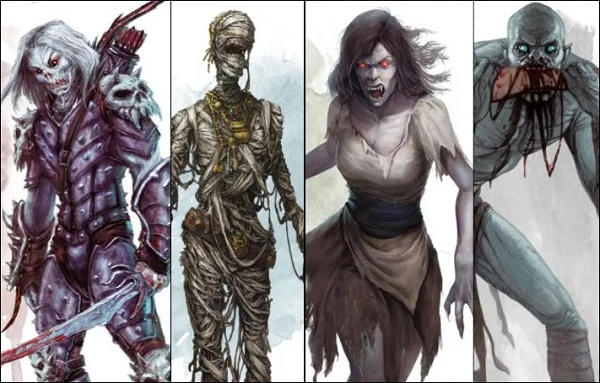
Number of players: 4-5
Length of the game: 4 hours
Difficulty: Simple
Enemy types: Common Halloween creatures, animated skeletons, spiders, spirits
Related Book(s): Frankenstein: The Modern Prometheus
What You Will Like
- Best for Halloween
- Versatile – can be family-friendly or not
- An introductory adventure
What You Might Not Like
- Combat encounters might feel too easy
- Meant for low-level characters
- Basic plot progression
In the world of tabletop gaming, Undead can mean two things: creature type and theme. As a theme, Undead can offer a wide range of horror adventuring tropes. Players might encounter a medieval zombie outbreak, a werewolf incursion, or a necromancer determined to raise an army of skeletons and pale corpses.
An Undead-themed D&D game is best for a one-shot session. It can also serve as a starter adventure for D&D beginners or players with low-level characters. The main reason for this is sustainability. The Undead trope can only go so far before the players get bored or demotivated.
Nevertheless, most kids love Undead adventures. Through these adventures, kids can exercise their creativity while bashing skeleton skulls without consequences.
Romeo & Juliet
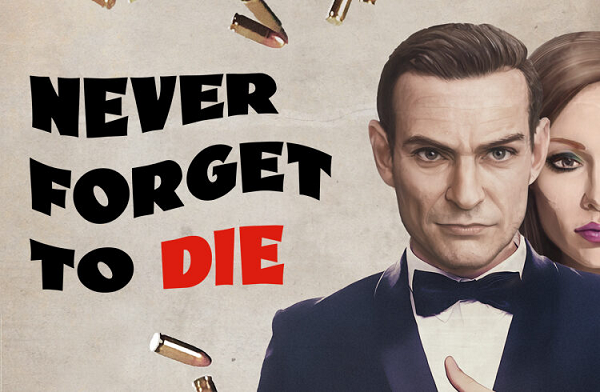
Number of players: 4-5
Length of the game: 6 hours
Difficulty: Normal
Enemy types: Deceitful monarchs, greedy clergy, knaves
Related Book(s): Romeo and Juliet (Folger Shakespeare Library)
What You Will Like
- Great for medieval history enthusiasts
- A unique take on medieval romance
- Roleplay-focused
- Can be low magic or high magic
What You Might Not Like
- Minimal combat encounters
- Medieval politicking can get boring
- Easy to commit devastating mistakes
Romeo and Juliet is not your average D&D theme. This theme explores an in-depth perspective of medieval life while maintaining the focal romance of two poignant characters. NPCs can take the roles of the handsome Romeo and the beautiful Juliet, while players can be the lovers’ friends.
One of the plot devices of a Romeo and Juliet D&D theme is medieval politicking. Other characters in the game (villains and NPCs) might offer political boons to players. Even though the party can use the boons to climb the ladder of power, they might get betrayed later on. Of course, betrayal is a common part of D&D, and players have the option to minimize risk through skill checks and combat effectiveness. But in a pure Romeo and Juliet campaign, risk mitigation is tricky because of numerous combat-focused restrictions.
At the end of the day, the DM has the final say in terms of adding or lifting typical D&D combat limitations. A Romeo and Juliet campaign shouldn’t just be cheesy – it must have depth, balance, and replayability!
Samurai
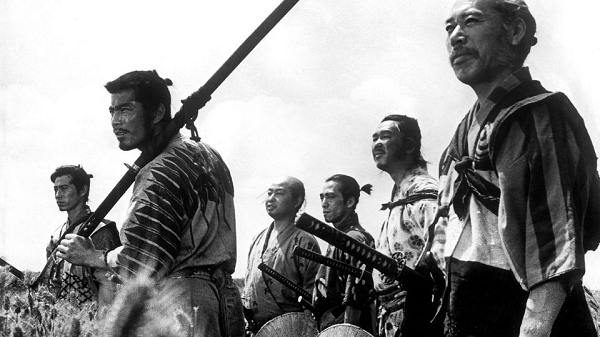
Number of players: 4-5
Length of the game: 6 hours
Difficulty: Normal
Enemy types: Enemy samurai, Japanese-themed creatures, abominations
Related Book(s): Unshakable Awareness: Meditation in the Heart of Chaos, Taught by a Master of Four Samurai Arts (Total Embodiment Method TEM)
What You Will Like
- A dramatic adventure
- Intense duels
- Rich cultural background
- Mysterious magic
What You Might Not Like
- Simple combat encounters
- Can be slow sometimes
- Weak plot hooks
A Samurai-themed D&D campaign offers more than just an adventure. Through this campaign, you will experience what it’s like to be an honorable warrior in a world full of cruelty. On the flip side, you can also become a greedy bandit set on the path of evil.
Depending on the DM, a Samurai campaign will probably have mysterious sources of magic. You just can’t find random spell scrolls in the world of Samurai. Instead, you may need to bargain with a reclusive witch or a Geisha practicing magic in secret. Magic in a Samurai world may or may not be outlawed by the ruling powers.
It’s normal for a Samurai D&D campaign to be slow. Players are expected to fully immerse themselves in the game’s roleplay aspects. Whether you’re in the middle of afternoon tea or dueling with another Samurai, you must feel the weight of your actions.
Feywild
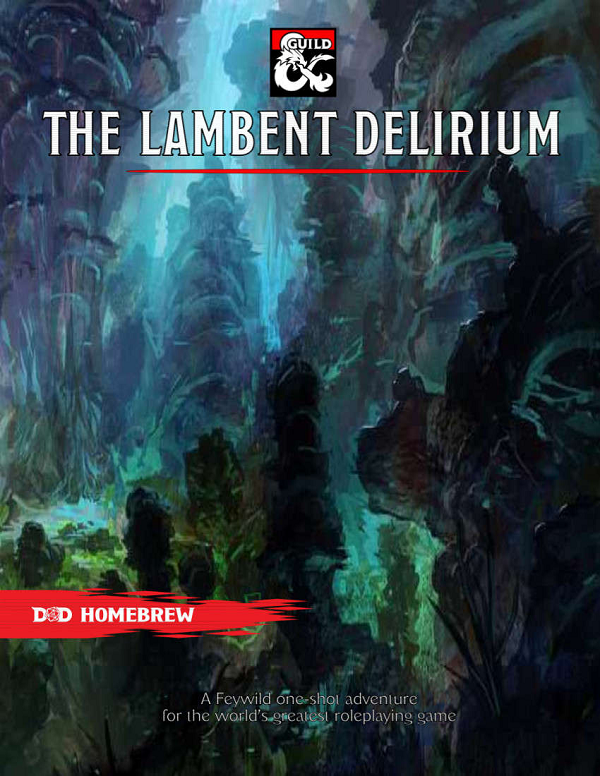
Number of players: 4-6
Length of the game: 8 hours
Difficulty: Medium
Enemy types: Transforming lords, plotting fairies, satyr, awakened trees
Related Book(s): The Wild Beyond The Witchlight: A Feywild Adventure (Dungeons & Dragons Book)
What You Will Like
- A whimsical adventure
- Lots of traps and plot hooks
- A thriving fantasy world
- Intricate characters
What You Might Not Like
- Difficult combat encounters
- Spellcasting consequences
- Specific Feywild effects
Adventuring in the Feywild is like stepping inside the land of dreams. Almost every part of the world is beautiful and thriving with life. You will encounter playful fairies and locals who always have something nice to offer. Yet it’s not always nice in Feywild! Some creatures are deceitful, greedy, and eager to plot against whatever Court is ruling the world.
In a Feywild-themed D&D adventure, the lines between entrapment and entertainment are blurry. The party might engage in a festive gathering, not knowing that it’s a major plot hook set by a cunning DM. Combat encounters in Feywild are also challenging because of lingering status effects and an abundance of magic. Martial characters (i.e. Fighter) will probably have a difficult time overcoming fey creatures with many resistances.
It’s also exhausting to run a Fey-themed adventure because of the mental effort needed to describe scenes and actions. To ease this problem, DMs should use Fey-inspired miniatures and art cutouts.
Post-Apocalyptic
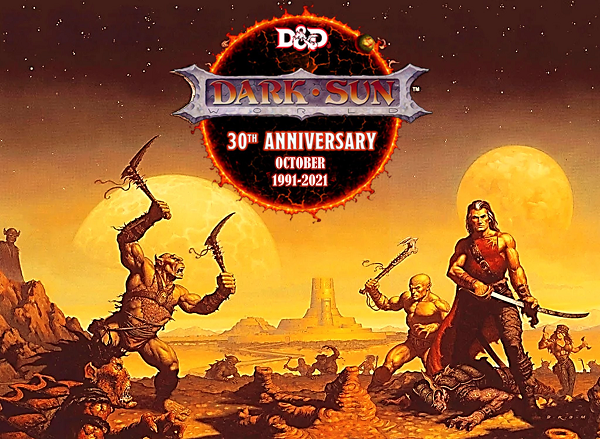
Number of players: 4-6
Length of the game: 6 hours
Difficulty: Normal
Enemy types: Raiders, mutants, irradiated environment, awakened AI
Related Book(s): Petersen Games Planet Apocalypse Core Game
What You Will Like
- Survival of the fittest
- Challenging strategic combat
- Discovering the ‘old world’
- Colony rebuilding mechanic
What You Might Not Like
- Deadly environment
- Minimal diplomatic options
- Enemies with strange and strong weapons
A post-apocalyptic D&D campaign is popular because of its obvious challenge. Every encounter in a post-apocalyptic campaign is dangerous because of conflicting faction ideals, greed, and competition for a habitable place. Players must also work hard to stave off the effects of radiation while scavenging for necessary supplies.
Another interesting thing about a post-apocalyptic campaign is colony simulation. This simulation mechanic allows players to rebuild the world slowly but surely. Combat encounters might fall on the wayside as players gradually decide to establish their new colony or kingdom. The players must also defend their colony against hundreds of raiders who want a piece of the action. It’s a dog-eat-dog world after all!
The early tier of post-apocalyptic gaming is infuriating and challenging at the same time. Almost all enemies have strong scavenged weapons while the players have nothing but their abilities. Of course, the DM can change this rule anytime, reducing the challenge faced by the players early on.
FAQ About D&D Bundles
What are the easiest themes for beginner DMs and players?
Answer: Holiday and low-magic themes are easy for beginner DMs and players. There are almost no additional rules required, and the enemies are not too formidable.
Do I need miniatures to enjoy D&D themes better?
Answer: While miniatures are not necessary, they will help you enjoy any D&D game through authentic visual representation. Battles are also easier with the help of high-quality miniatures.
What are the books I need to help me run a D&D theme effectively?
Answer: The books that you need are Player’s Handbook, Monster Manual, and Dungeon Master’s Guide. These official books greatly complement the bundles that we’ve suggested in this article.
What is the difference between high magic and low magic themes?
Answer: A high-magic theme utilizes the raw strength of magic in many ways possible. It’s like magic is a part of everyday life. A low-magic theme has several restrictions when it comes to spells and rituals. It’s also possible that spells in a low-magic world are diminishing or getting snuffed out by the antagonist.
Is it okay to use non-D&D RPG systems?
Answer: Of course! D&D is not just the RPG system ever created. You can enjoy other popular titles like Dungeon World, Blades in the Dark, 13th Age, Burning Wheel, Ars Magica, Ryuutama, Lamentations of the Flame Princess, GURPS, and Traveller.
Conclusion
Exploring new themes is one of the best ways to fully enjoy D&D. Try to explore as many themes as you can in order to gain new perspectives about the possibilities of tabletop gaming. The journey will be fun, and you might meet new friends along the way!
Which among the suggested bundles are your favorites? Tell us in the comments section below!


